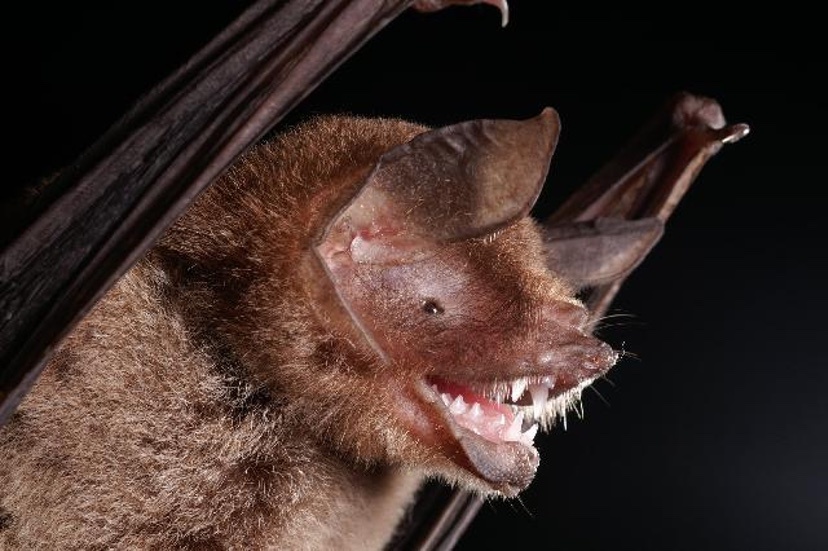How do you figure this out? How do you put a price on a bat?
— from ‘What’s a wild bat worth to you? This economist is asking’ by reporters Benji Jones and Byrd Pinkerton on Vox.com, June 19, 2024.
Bats, like the rest of us, spend much of their lives eating.
Here in America, most of them chow down on insects — notably, mosquitos. A single bat can eat as many as 1,000 mosquitos in an hour. Basically, a gluten-free diet.
Bats also eat insect pests that damage crops, providing pest-control services for farmers and agricultural conglomerates across the country, at no charge.
Maybe we can assign a value to their work? Which they don’t actually see as ‘work’ so much as, dinner. But still, we humans reap the benefits.
And how do we reward these helpful animals? Mostly, by including their image in Halloween illustrations, right alongside witches, zombies and monsters — disgusting creatures who, I will mention, have never been known to eat mosquitos or insect pests.
We can do better.
Recently, one of the nation’s few environmental economists, Dr. Amy Ando of Ohio State University, has made an effort to put a price tag on animals and ecosystems to make sure they’re adequately valued in our modern economy. According to Dr. Ando, animals and plants have a value. Nature as a whole has a value.
But we don’t normally pay money for bats, unless we’re at a wet market in Wuhan, China.
(I couldn’t find the price of a Wuhan bat, but a flying squirrel will set you back about $25. Incidentally, no bats were sold at the Wuhan market between May 2017 and November 2019 when the COVID virus started making its rounds. So bats have a believable alibi.)
Nevertheless, Dr. Ando has spent many years, as an economist, assigning dollar figures to various valuable plants and animals, because a lot of Americans have trouble thinking about ‘value’ until a dollar figure is attached.
Protecting nature from humans can be expensive. That’s a sad commentary on humans, but we also have, on our side, environmental economists like Dr. Ando who are willing to spend long hours sitting in their university offices, filling in numbers on spreadsheets, and then getting an interview published in a radical left-wing website like Vox.com.
As a result of those long hours with spreadsheets, Dr. Ando and fellow researcher Dale Manning estimated the financial loss to farmers resulting from ‘white-nose syndrome’ — a fungal infection that’s been wiping out bat populations across the U.S. It’s hard enough to be a farmer in the U.S. without watching your local bat population decimated. Especially if you’re an organic farmer and can’t simply apply additional tons of cancer-causing pesticides on your crops.
From the Vox.com interview:
…Governments have to make decisions. We make decisions all the time about what regulations we’re going to put in place and what investments we’re going to make in conservation. The structures that the United States has for making those decisions tend to use cost-benefit analyses. And if you don’t have a dollar amount for nature to balance against the dollar amount of the cost, then it’s hard to think that you’re really doing a thorough job of the analysis…
…there are things we can do to help bats not get sick, but they’re expensive. They involve people trudging through bat caves full of guano [bat poop]. They come at a cost, both in dollar value and human labor. So are these efforts worth doing? If you’re the government, is this an investment that’s worth making?
Our job was to try to quantify, in ways that matter to the government and the public, the benefit that bats are having…
I don’t know how other people feel, but the worst part of this situation isn’t so much the cost involved, but the idea of trudging through bat caves full of guano.
It’s bad enough that the cave is also full of bats, which sharp little teeth.
You couldn’t pay me enough money, to trudge through a bat cave full of guano. Period.
But if there are people willing to do it, I think they should be paid. So it really does come down to the dollars.
Of course, we’re talking here about the ‘use value’ of nature. How bats can serve us, as our little mosquito-eating workers. But Dr. Ando and her fellow environmental economists also have an interest in ‘non-use values’. How much money are we willing to spend addressing white-nose syndrome simply because bats are cute?
I personally find them scary. But some people seem to think bats are adorable, and fascinating. (Some are even willing to trudge through bat caves…) Dr. Ando and her fellow economists do surveys to find out who these people are, and how many of them there are, and how much money they’re willing to spend saving bats. These are typically the same people willing to spend money saving whales and Monarch butterflies and spotted owls and African elephants.
Willing to spend money on preserving nature in general. For no good reason, really.
Speaking for myself, I often spend money for no good reason. I’m thinking about the money I spend at the car wash, for example.
I could be spending that money on bats…
Underrated writer Louis Cannon grew up in the vast American West, although his ex-wife, given the slightest opportunity, will deny that he ever grew up at all. You can read more stories on his Substack account.

